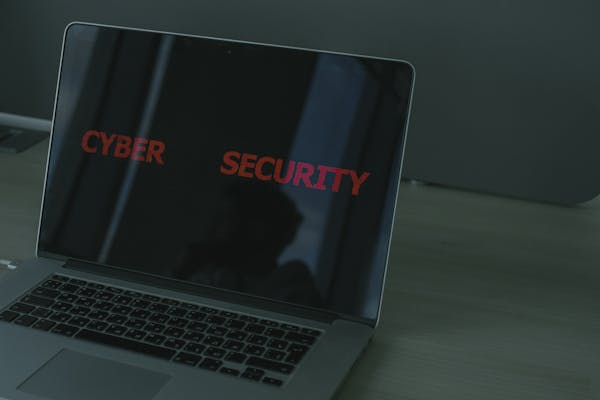In today’s digitally connected world, the importance of cybersecurity cannot be overstated. As technology continues to advance, so do the threats posed by malicious actors. Cybersecurity is no longer a concern for just large corporations and governments; it affects individuals, small businesses, and virtually every sector of society. This article explores the vital role cybersecurity plays in protecting sensitive data, ensuring system integrity, and maintaining user trust.

Introduction to Cybersecurity
Cybersecurity refers to the practice of defending computers, servers, mobile devices, electronic systems, networks, and data from malicious attacks. Also referred to as information technology security or electronic information security, cybersecurity has applications across various contexts, from business to mobile computing and beyond.
As cyber threats become more sophisticated, the importance of cybersecurity grows exponentially. Data breaches, ransomware attacks, phishing scams, and other types of cybercrimes are on the rise, impacting individuals and organizations worldwide. Understanding the role of cybersecurity and the measures available to protect digital assets is crucial for anyone connected to the internet.
The Digital Landscape: A Breeding Ground for Cybercrime

The growth of the internet and digital communication has created a new frontier for crime. Cybercrime takes many forms, from unauthorized access to sensitive information to the spread of viruses and malicious software, to financial fraud and identity theft. Each year, the sophistication and scale of cyberattacks increase, leaving organizations, governments, and individuals more vulnerable than ever before.
- Data Breaches: One of the most common forms of cybercrime is the data breach, in which unauthorized individuals gain access to personal, financial, or business-related information. Data breaches can cause significant harm, from financial losses to damage to an organization’s reputation.
- Ransomware Attacks: Ransomware is a form of malware that encrypts a victim’s files, demanding payment (usually in cryptocurrency) to restore access. In recent years, ransomware attacks have grown in frequency and complexity, often targeting hospitals, educational institutions, and municipal governments.
- Phishing and Social Engineering: Cybercriminals use phishing emails, fake websites, and other forms of social engineering to trick users into revealing sensitive information, such as passwords or credit card details. These methods rely on human error rather than technical flaws, making them particularly difficult to combat.
- Insider Threats: Not all cybersecurity threats come from external sources. Insider threats—those posed by employees or other trusted individuals—can be equally dangerous. Disgruntled workers, for instance, may intentionally leak sensitive information, while negligent insiders may accidentally expose systems to risk.
Why Cybersecurity is More Important Than Ever

The importance of cybersecurity is tied to the evolving nature of cyber threats and the increasing value of data in our digital economy. Several factors underscore why cybersecurity is more critical today than it has ever been:
- Proliferation of Devices: With the explosion of the Internet of Things (IoT), the number of connected devices has skyrocketed. From smart home devices to wearable technology, the attack surface for cybercriminals has expanded, making cybersecurity more challenging. Each connected device represents a potential point of vulnerability.
- Increased Digital Transactions: The shift towards digital commerce and the increasing reliance on online services mean more personal data is being shared online. From online shopping to mobile banking, our digital footprints are growing, and cybercriminals are eager to exploit any weakness in security.
- Remote Work and Cloud Computing: The COVID-19 pandemic accelerated the adoption of remote work, and cloud-based solutions became essential for business continuity. However, these developments also opened new avenues for cyberattacks, particularly on networks that lack proper security controls.
- Growing Complexity of Cyberattacks: Cybercriminals are continually developing new techniques to bypass existing security measures. Advanced persistent threats (APTs), for example, involve prolonged and targeted attacks, often orchestrated by sophisticated groups. These attacks may go unnoticed for months or even years, resulting in significant data loss.
Key Elements of Cybersecurity
Cybersecurity encompasses a wide range of practices and technologies designed to protect systems and data. These can be grouped into several key areas:
- Network Security: This involves protecting a computer network from intruders, including malicious software and unauthorized users. Techniques such as firewalls, virtual private networks (VPNs), and intrusion detection systems (IDS) are often used to enhance network security.
- Data Security: Data is often the primary target of cyberattacks. Protecting sensitive information through encryption, access controls, and regular backups is essential. Data security measures ensure that even if a breach occurs, the stolen data is rendered useless to attackers.
- Endpoint Security: Every device connected to a network is considered an endpoint, and each represents a potential vulnerability. Endpoint security focuses on securing individual devices—such as laptops, smartphones, and tablets—through the use of antivirus software, encryption, and regular security updates.
- Application Security: Applications, whether on a computer or a mobile device, can be vulnerable to attacks if not properly secured. Application security involves incorporating security measures during the software development process, as well as ongoing monitoring for vulnerabilities.
- Identity and Access Management (IAM): Proper management of user identities and access rights is crucial to minimizing risk. Multi-factor authentication (MFA), password policies, and role-based access controls are essential to ensuring that only authorized individuals have access to sensitive information.
- Disaster Recovery and Business Continuity: Even with robust security measures in place, breaches and attacks can still occur. Having a disaster recovery plan ensures that an organization can recover from a cyberattack quickly and minimize downtime. Backup systems, redundancy, and regular testing of recovery procedures are critical components of this process.
The Role of Government and Regulation in Cybersecurity
Governments around the world recognize the importance of cybersecurity and have implemented regulations to safeguard digital infrastructure and data. Compliance with these regulations is essential for businesses and organizations that handle sensitive information.
- General Data Protection Regulation (GDPR): Enforced in the European Union (EU) since 2018, the GDPR has stringent requirements for how personal data is collected, processed, and stored. It grants individuals more control over their data and imposes severe penalties for non-compliance.
- California Consumer Privacy Act (CCPA): Modeled after the GDPR, the CCPA enhances privacy rights and consumer protection for residents of California, USA. It requires companies to be transparent about the personal information they collect and provides consumers with the right to request the deletion of their data.
- Health Insurance Portability and Accountability Act (HIPAA): In the healthcare sector, HIPAA ensures that medical organizations implement stringent data protection measures to safeguard patients’ health information.
- Cybersecurity Maturity Model Certification (CMMC): This certification is required by the U.S. Department of Defense (DoD) for contractors and subcontractors, ensuring they adhere to specific cybersecurity standards when handling sensitive government information.
Regulations such as these highlight the growing awareness of cybersecurity risks and the need for a standardized approach to protecting data and systems.
Emerging Threats in Cybersecurity
As technology evolves, so do the methods cybercriminals use to exploit vulnerabilities. Understanding the emerging threats in cybersecurity is essential for developing proactive defense strategies.
- Artificial Intelligence (AI) and Machine Learning Attacks: While AI and machine learning can enhance cybersecurity by automating threat detection and response, they can also be exploited by cybercriminals. AI can be used to automate attacks, create more convincing phishing schemes, and even identify new vulnerabilities in systems.
- Deepfakes and Misinformation: The rise of deepfake technology—AI-generated audio or video that convincingly mimics real individuals—presents a new type of cyber threat. Deepfakes can be used to impersonate public figures, deceive users, or spread misinformation.
- Quantum Computing: Quantum computing promises to revolutionize many industries, but it also poses a threat to current encryption methods. Once quantum computers become more widely available, they could potentially break the cryptographic keys that secure sensitive data, rendering many current cybersecurity measures obsolete.
- Supply Chain Attacks: In a supply chain attack, cybercriminals target the less secure elements of a company’s supply chain to gain access to their systems. These types of attacks can be particularly challenging to prevent, as they often exploit third-party vendors or service providers.
Best Practices for Strengthening Cybersecurity
Given the importance of cybersecurity, it is crucial for individuals and organizations to adopt best practices to safeguard their systems and data. Some key strategies include:
- Regular Software Updates: Ensuring that all software, including operating systems and applications, is up to date is one of the simplest yet most effective ways to prevent cyberattacks. Many attacks exploit known vulnerabilities that have already been patched by software developers.
- Employee Training and Awareness: Human error is often the weakest link in cybersecurity defenses. Regular training for employees on identifying phishing attempts, practicing safe browsing habits, and adhering to company security policies can significantly reduce the risk of cyberattacks.
- Encryption of Sensitive Data: Encrypting sensitive data both at rest and in transit ensures that even if cybercriminals gain access to it, they cannot easily decipher the information. This is particularly important for financial transactions and personal data.
- Use of Strong Passwords and Multi-Factor Authentication (MFA): Encouraging the use of strong, unique passwords and implementing multi-factor authentication can add an extra layer of security to systems and applications.
- Network Segmentation: Segmenting networks can limit the spread of malware or unauthorized access within an organization. By isolating different parts of a network, organizations can contain potential breaches more effectively.
- Regular Backups: Regularly backing up data ensures that in the event of a ransomware attack or other cyber incident, an organization can restore critical data without paying a ransom. Backup systems should be tested regularly to ensure they function correctly in the event of an emergency.
As we continue to embrace the digital age, the importance of cybersecurity will only continue to grow. Protecting sensitive information, maintaining system integrity, and ensuring user privacy are critical challenges that require ongoing innovation and vigilance. Governments, businesses, and individuals must work together to develop more effective cybersecurity strategies, ensuring that we can navigate the digital landscape safely and securely.
In a world where data is often considered more valuable than currency, the stakes have never been higher. Whether it’s defending against cyberattacks, implementing robust security measures, or educating users on the dangers of online threats, cybersecurity is a shared responsibility—one that we all must take seriously to protect our digital futures.





